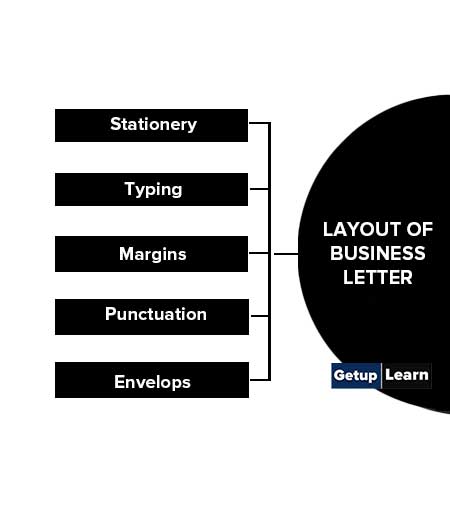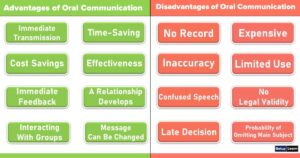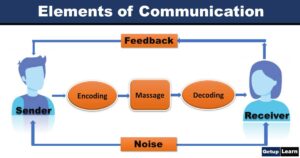Table of Contents
Layout of Business Letter
The letter format is used when the receiver of the correspondence is outside of your company or organization. The memo format is used when the receiver of the correspondence is a member of the company or organization you work for (inter-office correspondence).
Letter Types
-
Personal Business Letters: Letters were written to a business or organization on behalf of YOURSELF. Example: You write a letter of complaint to Dave Smith at the Pepsi Company because you found a mouse tail in the bottom of a can of soda you were drinking.
- Business Letters: Letters written by a business/organization to another business/organization or an individual on behalf of the BUSINESS/ORGANIZATION. Example: Dave Smith at Pepsi writes a letter of apology to you based on your letter of complaint. Dave, although writing the letter, is really expressing the opinion of the company he works for.
These are the different types of the layout of business letters:

Stationery
For making a favorable initial impression it is necessary to choose a good quality paper. The extra expense on this account is more than compensated by the impression it creates on the reader. The white paper should be preferred as the letters stand out clearly on it and make it easy to read.
Some firms use tinted paper to suit their trade. If such paper is used it should be of a light shade and the ribbon of the typewriter should also be chosen to harmonize with it.
The standard size of the paper used for business letters is 8½ by 11 inches. Other sizes used are 8 × 10 inches, 5 × 10 inches, 5½ × 8½ inches, and 7½ × 8½ inches.
Typing
Most business letters are typed. There are two reasons for it. Typing saves time and gives a tidy appearance to the letter. Care should, however, be taken to get the letters neatly typed. Many business organizations do not mind paying a little extra to hire the services of efficient typists: They rightly consider the extra expense a good investment an investment that pays rich dividends.
Margins
Margins in a letter add to its attractiveness. Generally, a one-inch margin is left on the sides and one and a half inches left on the top and the bottom in a standard size letter. In letters of smaller sizes margins are suitably reduced. The letter should be set neatly within the space thus left so as to give a picture-frame appearance.
Punctuation
The modem tendency is to omit unnecessary commas and full stops and to use what is called open punctuation. In this style, no commas and full stops are used in any part of the letter except in the body in which the usual punctuation marks are used. Another punctuation style is known as mixed.
In it a comma is put after the date, the house number (if any), the salutation, and the complimentary close, and a full stop follows the last line of the inside address. The third style called closed punctuation is conventional; in it, the main parts of the letter are punctuated as follows:
| Date: 11 September, 2022 Inside Address: Sri S.P. Shridhar, Managing Director, Triveni Steel Corporation, 43, Gokhale Marg, New Delhi – 110 004. Salutation: Dear Sri Shirodhar, Complimentary close: Yours sincerely, |
Envelops
Envelopes should be chosen to suit the size of the paper on which the letter is typed. If a window envelope is used, the letter should be folded such that the inside address lies just beneath the window. The number of folds should be as few as possible.
Read More Related Articles
[su_spoiler title=”What is Communication? | Mass Communication” style=”fancy” icon=”plus-circle”]
What is Communication?
[/su_spoiler]
[su_spoiler title=”Types of Communication | Principles of Communication” style=”fancy” icon=”plus-circle”]
-
Types of Communication
- Verbal Communication
- Non-Verbal Communication
- Written Communication
- Visual Communication
- Feedback Communication
- Mass Communication
- Group Communication
[/su_spoiler]
[su_spoiler title=”Nonverbal Communication | Verbal Communication” style=”fancy” icon=”plus-circle”]
[/su_spoiler]
[su_spoiler title=”Written Communication | Oral Communication” style=”fancy” icon=”plus-circle”]
Written Communication
[/su_spoiler]
[su_spoiler title=”Business Communication | Organizational Communication” style=”fancy” icon=”plus-circle”]
[/su_spoiler]
[su_spoiler title=”Formal Communication | Informal Communication” style=”fancy” icon=”plus-circle”]
[/su_spoiler]
[su_spoiler title=”Interpersonal Communication | Informal Communication” style=”fancy” icon=”plus-circle”]
[/su_spoiler]
[su_spoiler title=”Downward Communication | Upward Communication” style=”fancy” icon=”plus-circle”]
[/su_spoiler]
[su_spoiler title=”Barriers to Communication | Horizontal or Lateral Communication” style=”fancy” icon=”plus-circle”]
[/su_spoiler]
[su_spoiler title=”Self Development | Effective Communication” style=”fancy” icon=”plus-circle”]
[/su_spoiler]
[su_spoiler title=”Difference Between Oral and Written Communication | Theories of Communication” style=”fancy” icon=”plus-circle”]
[/su_spoiler]
What is the layout of business letter?
Following are the different types of the layout of business letters:
1. Stationery
2. Typing
3. Margins
4. Punctuation
5. Envelops.















